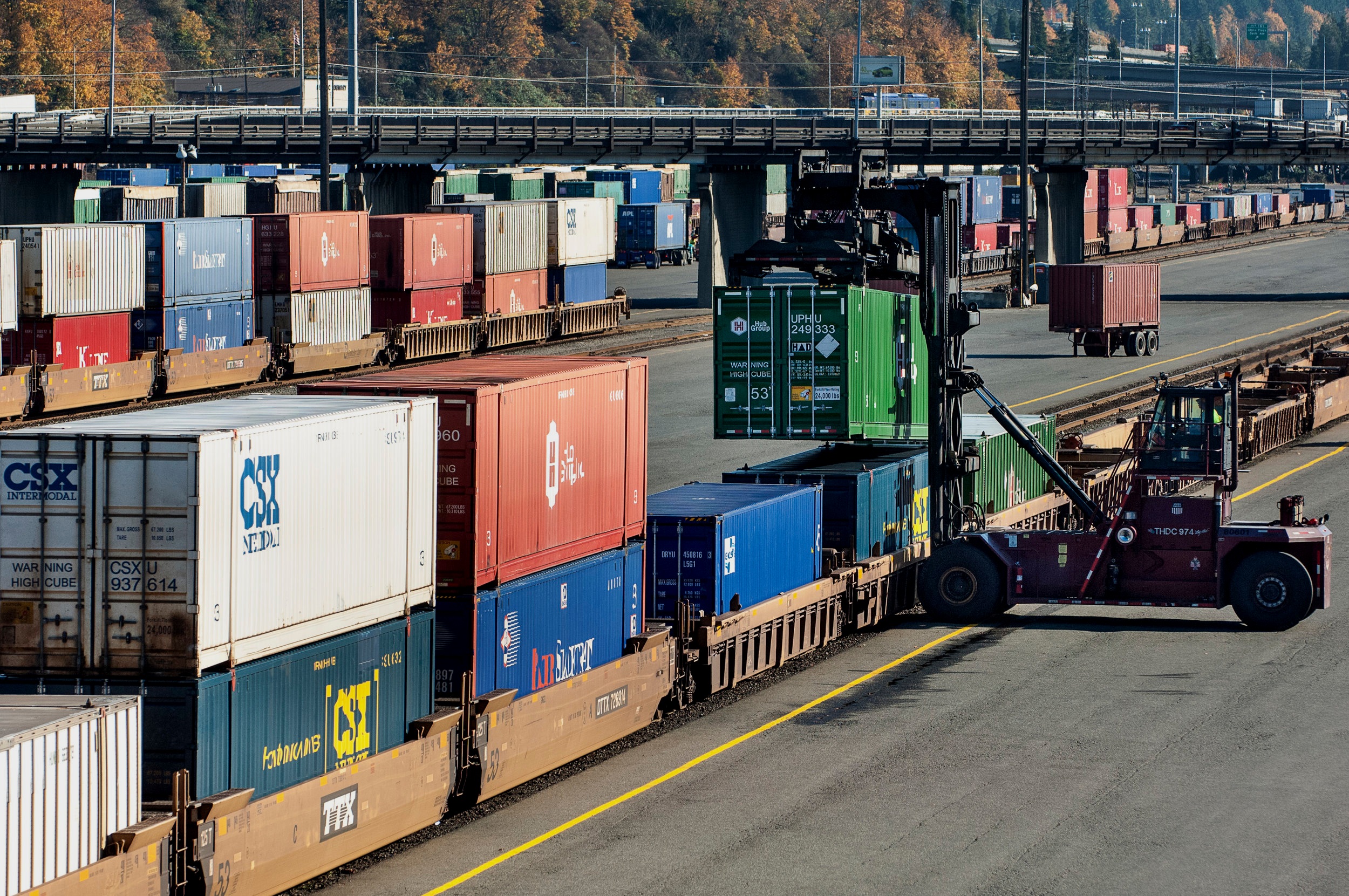Goods travel via one of four modes of transportation: road, rail, water, and air. One of the more enduring images of cargo is the container ship – the large vessels that bring goods to and from our European and Asian trading partners. But once the container arrives, what then? How do we move the 70% of imports that are destined for points south and east of the state?.
Water – Washington’s Ocean Highway
Washington has 11 deep-draft ports, a tremendous asset for the state’s economy. Seven of these ports are on Puget Sound – the largest of them, the Ports of Seattle and Tacoma, together comprise the second largest load center in the nation, behind the complex at Los Angeles/Long Beach. One deep-draft port, the Port of Grays Harbor, is located on the coast; and three are located on the Columbia River. Together, these ports create a seamless network that send our goods to a global market, and import goods from other countries, bound for Washington stores.
The Columbia/Snake River system stretches 365 miles inland from the Pacific Ocean. The three deep-draft ports along this system, Longview, Kalama, and Vancouver, are major shipping centers for the state. Upstream, the Ports of Klickitat, Pasco, Kennewick, and Benton are served by barge along the Columbia. The Ports of Whitman County, Walla Walla, and Clarkston are served by barge along the Snake River.
Road – Crucial for Cargo and Customers Alike
Washington handles 7% of US exports and 6% of US imports – all of that cargo sometimes puts a strain on roads already crowded with commuter traffic. The rapid growth in trade has coincided with the rapid growth of cars on the roadway – leading to frustration for drivers and shippers alike.
Government agencies are working at all levels – federal, state, and local – to determine the best solutions for each region of the state. The demands on roads in the Puget Sound region differ from those in the agricultural regions of Eastern Washington; and those differ from the particular problems in Southwest Washington. But one theme is constant: as trade and population grows, our road infrastructure must be improved to meet the increasing demands.
Truck traffic from Puget Sound ports is expected to grow considerably in the next 15 years, reaching 1.7 million loaded trucks on I-5 in 2020. Preparing for such significant growth requires insightful, thorough strategic planning.
Several cooperative efforts are underway to address the problem. The Freight Mobility Strategic Investment Board, or FMSIB, was established to prioritize and oversee state and local projects. And several coalitions have been formed in the Puget Sound region to address worsening traffic in that area. The Freight Action Strategy for the Everett-Seattle-Tacoma Corridor, or FAST Corridor, exists to improve freight mobility problems along that section of I-5, focusing on the points where goods are transferred between rail yards and ports, or where roads and railroad tracks intersect – where bottlenecks frequently form.
Rail – the Fast Track for Cargo
Rail has sometimes been called “the forgotten mode” – as passenger rail travel has declined, its importance in the nation’s economy is sometimes overshadowed by road and air. But rail is a critical component in our state’s freight mobility system.
In the past few years, federal, state and local agencies have begun studying how Washington can best improve the state’s rail infrastructure. The Washington State Department of Transportation (WSDOT) is currently completing an analysis of the existing rail stock and forecasting what changes must be made to accommodate the increase in rail traffic expected by 2020. By that time, rail traffic is expected to exceed truck traffic throughout the state, particularly in the Puget Sound region. Puget Sound ports rail traffic is forecasted to exceed truck traffic by nearly four percent within 15 years.
Air – Washington Goods, Taking Flight
Washington’s ports own or operate 31 airports, the majority of those used for commercial service in the state. Besides moving people, airports are an integral link in the freight mobility system.
The state’s largest airport, Seattle-Tacoma International Airport, has seen tremendous growth in air cargo, averaging seven percent growth each year. International freight has grown even more rapidly. And while tonnage traffic is not typically reported by national trends will indicate that air cargo traffic will increase up to eight percent in years to come.
